| Universiteit Leiden | |
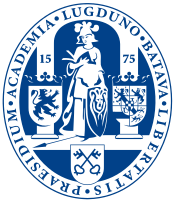 | |
| Latin: Academia Lugduno-Batava | |
| Former names | Rijksuniversiteit Leiden |
|---|---|
| Motto | Libertatis Praesidium (Latin) |
| Motto in English | Bastion of Freedom |
| Type | Public research university |
| Established | 8 February 1575; 449 years ago (1575-02-08) |
| Founder | William of Orange |
| Academic affiliation | TPC |
| Budget | €777 million (2021) |
| President | Annetje Ottow |
| Rector | Hester Bijl |
| Academic staff | 1,862 (2021) |
| Administrative staff | 1,573 |
| Students | 37,136 (2021–22) |
| Undergraduates | 24,496 (2021–22) |
| Postgraduates | 12,395 (2021–22) |
| Doctoral students | 886 (2021) |
| Location | Leiden and The Hague, South Holland, Netherlands 52°9′25″N 4°29′7″E / 52.15694°N 4.48528°E / 52.15694; 4.48528 |
| Campus | Urban and College town |
| Language | Dutch, English (Additional languages for language programmes) |
| Colours | LEI Blue |
| Website | universiteitleiden.nl |
 | |
  | |
Leiden University (abbreviated as LEI; Dutch: Universiteit Leiden) is a public research university in Leiden, Netherlands. It was founded as a Protestant university in 1575 by William, Prince of Orange as the first university in the Netherlands.
During the Dutch Golden Age scholars from around Europe were attracted to the Dutch Republic for its climate of intellectual tolerance. Individuals such as René Descartes, Rembrandt, Christiaan Huygens, Hugo Grotius, Benedictus Spinoza, and later Baron d'Holbach were active in Leiden and environs.
The university has seven academic faculties and over fifty subject departments, housing more than forty national and international research institutes. Its historical primary campus consists of several buildings spread over Leiden, while a second campus located in The Hague houses a liberal arts college (Leiden University College The Hague) and several of its faculties. It is a member of the Coimbra Group, the Europaeum, and a founding member of the League of European Research Universities.
The university has produced twenty-six Spinoza Prize Laureates and sixteen Nobel Laureates. Members of the Dutch royal family such as Queen Juliana, Queen Beatrix, and King Willem-Alexander are alumni, and ten prime ministers of the Netherlands including Mark Rutte. US President John Quincy Adams also studied at the university.
History
Foundation and early history
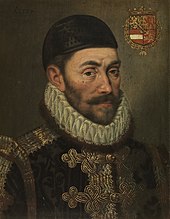


In 1575, the emerging Dutch Republic did not have universities in its northern heartland. The only other university in the Habsburg Netherlands was the University of Leuven located in an area under firm Spanish control. Prince William founded Leiden University to give the Northern Netherlands an institution that could educate its citizens in religion and provide the government with educated men in all fields. It is said the choice fell on Leiden as a reward for the heroic defence of Leiden against Spanish attacks in 1574. The name of Philip II of Spain, William's adversary, appears on the official foundation certificate as he was still the de jure count of Holland. Philip II forbade all his subjects to study in Leiden.
The new institution was initially located in the Convent of Saint Barbara, then moved to the Faliede Bagijn Church in 1577 (now the location of the university museum) and in 1581 to a former convent of Cistercian nuns, a site which it still occupies, though the original building was destroyed by a fire in 1616.
Leiden University's reputation was created in part by the presence of scholars such as Justus Lipsius, Joseph Scaliger, Franciscus Gomarus, Hugo Grotius, Jacobus Arminius, Daniel Heinsius, and Gerhard Johann Vossius within fifty years of its founding. By the 1640s, over five hundred students were enrolled from all across Europe, making it the largest Protestant university. Baruch Spinoza discovered Descartes's work partly at Leiden University, which he visited for periods of study multiple times. In the 18th century, Jacobus Gronovius, Herman Boerhaave, Tiberius Hemsterhuis, and David Ruhnken were among the renowned academics of the university.
In 1896, the Zeeman effect was discovered at the institution by Pieter Zeeman and shortly afterward explained by Hendrik Antoon Lorentz. In the world's first university low-temperature laboratory, Professor Heike Kamerlingh Onnes achieved a temperature only one degree above absolute zero. In 1908, he was also the first to succeed in liquifying helium and has played a role in the discovery of superconductivity in metals.
Modern day
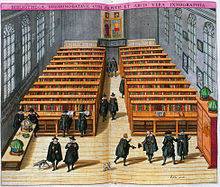
The University Library has more than 5.2 million books and fifty thousand journals. It also has collections of Western and Oriental manuscripts, printed books, archives, prints, drawings, photographs, maps, and atlases. It houses the world's largest collections on Indonesia and the Caribbean, collected by the Scaliger Institute which studies various aspects of knowledge transmissions and ideas through texts and images from antiquity to the present day. In 2005, the manuscript of Einstein on the quantum theory of the monatomic ideal gas (the Einstein-Bose condensation) was discovered in one of Leiden's libraries.
Partnerships
In 2012 Leiden entered into a strategic alliance with Delft University of Technology and Erasmus University Rotterdam for the universities to increase the quality of their research and teaching. The university is also the unofficial home of the Bilderberg Group, a meeting of high-level political and economic figures from North America and Europe. Leiden University partnered with Duke University School of Law starting in 2017 to run a joint summer program on global and transnational law from its Hague campus.
Location and buildings

The university has no central campus; its buildings are spread over the city. Some buildings, like the Gravensteen, are very old, while Van Steenis, Lipsius and Gorlaeus are much more modern.
Among the institutions affiliated with the university are The KITLV or Royal Netherlands Institute of Southeast Asian and Caribbean Studies (founded in 1851), the Leiden Observatory 1633; the Natural History Museum, with a very complete anatomical cabinet; the Rijksmuseum van Oudheden (National Museum of Antiquities), with especially valuable Egyptian and Indian departments; a museum of Dutch antiquities from the earliest times; and three ethnographical museums, of which the nucleus was Philipp Franz von Siebold's Japanese collections. The anatomical and pathological laboratories of the university are modern, and the museums of geology and mineralogy have been restored.
The Hortus Botanicus (botanical garden) is the oldest botanical garden in the Netherlands and one of the oldest in the world. Plants from all over the world have been carefully cultivated here by experts for more than four centuries. The Clusius garden (a reconstruction), the 18th-century Orangery with its monumental tub plants, the rare collection of historical trees hundreds of years old, the Japanese Siebold Memorial Museum symbolising the historical link between East and West, the tropical greenhouses with their world-class plant collections, and the central square and Conservatory exhibiting exotic plants from South Africa and southern Europe.
Campus The Hague

In 1998, the university has expanded to The Hague which has become home to Campus The Hague, with six of the seven faculties represented and exclusive home to the Faculty of Governance and Global Affairs, International Studies and Leiden University College The Hague, a liberal arts and sciences college. Here, the university offers academic courses in the fields of law, political science, public administration and medicine. It occupied a number of buildings in the centre of the city, including a college building at Lange Voorhout, before moving into the new 'Wijnhaven' building on Turfmarkt in 2016.
The Faculty of Governance and Global Affairs was established in 2011, together with the University College, and one of the largest programmes of the Faculty of Humanities, International Studies.
Since 2017 Leiden University Medical Center also has a branch at Campus The Hague.
Organisation



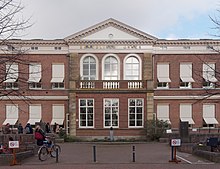
The university is divided into seven major faculties which offer approximately 50 undergraduate degree programmes and over 100 graduate programmes.
- Archaeology
- Governance and Global Affairs
- Humanities
- Law
- Medicine / LUMC
- Science
- Social and Behavioural sciences
Academic profile
Undergraduate studies
Most of the university's departments offer their degree programme(s). Undergraduate programmes lead to either a B.A., B.Sc., or LL.B. degree. Other degrees, such as the B.Eng. or B.F.A., are not awarded at Leiden University.
Graduate studies
Students can choose from a range of graduate programmes. Most of the above-mentioned undergraduate programmes can be continued with either a general or a specialised graduate program. Leiden University offers more than 100 graduate programs leading to either MA, MSc, MPhil, or LLM degrees. The MPhil is the most advanced graduate degree and is awarded by select university departments (mostly in the fields of Arts, Social Sciences, Archeology, Philosophy, and Theology). Admission to these programmes is highly selective and primarily aimed at those students opting for an academic career or before going into law or medicine. Traditionally, the MPhil degree enabled its holder to teach at the university levels as an associate professor.

Doctorate programmes

In addition, most departments, affiliated (research) institutes, or faculties offer doctorate programmes or positions, leading to the Ph.D. degree. Most of the Ph.D. programmes offered by the university are concentrated in several research schools or institutes.
Research schools and affiliated institutes
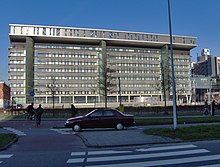
Leiden University has more than 50 research and graduate schools and institutes. Some of them are fully affiliated with one faculty of the university, while others are interfaculty institutes or interuniversity institutes.
| Institute | |
|---|---|
| ACPA | Academy of Creative and Performing Arts |
| ASC | African Studies Centre Leiden |
| CML | Institute of Environmental Sciences (CML) |
| CRC | Crisis Research Centre |
| CTI | Centre for Language and Identity |
| CWTS | Centre for Science and Technology Studies |
| The Meijers Research Institute | Research School for Legal Studies |
| eLaw@Leiden | Centre for Law in the Information Society |
| Grotius Centre | Research Centre for International Legal Studies |
| GSS | Leiden Graduate School of Science |
| Historical Institute | Leiden University Institute for History |
| Huizinga Instituut | Research Institute and Graduate School for Cultural History |
| IBL | Institute of Biology Leiden |
| IIAS | International Institute for Asian Studies |
| IIASL | International Institute of Air and Space Law |
| IOPS | Interuniversity Graduate School of Psychometrics and Sociometrics |
| ITC | International Tax Centre (ITC) |
| LACDR | The Leiden Academic Centre for Drug Research |
| LCMBS | Leiden Centre for Molecular BioScience |
| LEAD | Leiden Ethnosystems and Development Programme, Faculty of Science |
| Leyden Academy | Leyden Academy on Vitality and Ageing |
| LGSAS | Leiden Graduate School for Archeology |
| LIACS | Leiden Institute of Advanced Computer Science |
| LIAS | Leiden Institute for Area Studies |
| LIBC | Leiden Institute for Brain and Cognition |
| LIC | Leiden Institute of Chemistry |
| LION | Leiden Institute of Physics |
| LISOR | Leiden Institute for the Study of Religion |
| LUCAS | Leiden University Centre for the Arts in Society |
| LUCL | Leiden University Centre for Linguistics |
| LUMC | Leiden University Medical Centre |
| Mediëvistiek | Netherlands Research School for Medieval Studies |
| MI | Mathematical Institute |
| NIG | Netherlands Institute of Government |
| NINO | Netherlands Institute for the Near East |
| NOVA | Netherlands Research School for Astronomy |
| N.W. Posthumus Instituut | Netherlands Research Institute and School for Economic and Social History |
| OIKOS | National Research School in Classical Studies |
| Onderzoekschool Kunstgeschiedenis | Dutch Postgraduate School for Art History |
| OSL | Netherlands Research School for Literary Studies |
| PALLAS | Pallas Institute for Cultural Disciplines |
| Sterrewacht Leiden | Leiden Astronomical Observatory |
| The Europa Institute | Leiden Law School |
| Van Vollenhoven Institute | Research Institute for Law, Governance and Society |
Rankings and reputation
| University rankings | |
|---|---|
| Global – Overall | |
| ARWU World | 101-150 (2023) |
| CWUR World | 88 (2023) |
| CWTS World | 89 (2023) |
| QS World | =126 (2024) |
| Reuters World | 71 (2019) |
| THE World | 77 (2024) |
| USNWR Global | 56 (tie) (2024-25) |
| Global – Law | |
| QS Law | 24 (2024) |
| THE Law | 17 (2024) |
| Global – Liberal arts | |
| ARWU Social science | 40 (2022) |
| QS Arts & Humanities | (2022) |
| QS Politics | 20 (2022) |
| THE Arts and Humanities | 24 (2022) |
Notable alumni and professors
Main article: List of Leiden University peopleOf the 107 Spinoza Prize laureates (the highest scientific award of The Netherlands), twenty-six were granted to professors of Leiden University. Literary historian Frits van Oostrom was the first professor of Leiden to be granted the Spinoza award for his work on developing the NLCM centre (Dutch literature and culture in the Middle Ages) into a top research centre. Other Spinoza Prize winners are linguists Frederik Kortlandt and Pieter Muysken, mathematician Hendrik Lenstra, physicists Carlo Beenakker, Jan Zaanen, Dirk Bouwmeester and Michel Orrit, astronomers Ewine van Dishoeck, Marijn Franx and Alexander Tielens, transplantation biologist Els Goulmy, clinical epidemiologist Frits Rosendaal, pedagogue Marinus van IJzendoorn, archeologists Wil Roebroeks and Corinne Hofman, neurologist Michel Ferrari, classicist Ineke Sluiter, social psychologist Naomi Ellemers, statistician Aad van der Vaart, cognitive psychologist Eveline Crone, organisation psychologist Carsten de Dreu, chemical immunologist Sjaak Neefjes, parasitologist Maria Yazdanbakhsh, electrochemist Mark Koper and astrophysicist Ignas Snellen.
The Stevin Prize laureates who have achieved exceptional success in knowledge exchange and impact for society include the following Leiden professors: health psychologist Andrea Evers, immunology technologist Ton Schumacher and psychologist Judi Mesman. Among other leading professors are Wim Blockmans, professor of Medieval History, and Willem Adelaar, professor of Amerindian Languages.
Other notable Leiden researchers were the Arabist and Islam expert Christiaan Snouck Hurgronje, the law expert Cornelis van Vollenhoven and historian Johan Huizinga, all during the 1920s and 1930s. Martinus Beijerinck, one of the founders of virology, finished his Ph.D. at Leiden in 1877.
Nobel laureates
Kamerlingh Onnes was awarded the Nobel Prize for Physics in 1913. Three other professors received the Nobel Prize for their research performed at Universiteit Leiden: Hendrik Antoon Lorentz and Pieter Zeeman received the Nobel Prize for their pioneering work in the field of optical and electronic phenomena, and the physiologist Willem Einthoven for his invention of the string galvanometer, which among other things, enabled the development of electrocardiography.
Nobel laureates associated with Leiden include the physicists Albert Einstein, Enrico Fermi, and Paul Ehrenfest. Other Leiden-affiliated Nobel laureates include Jacobus Henricus van 't Hoff, Johannes Diderik van der Waals, Tobias Asser, Albert Szent-Györgyi, Igor Tamm, Jan Tinbergen, Nikolaas Tinbergen, Tjalling Koopmans, Nicolaas Bloembergen, and Niels Jerne.
See also
- Leiden school
- Leiden University College The Hague
- List of early modern universities in Europe
- List of rectores magnifici of Leiden University
References
- Record of the Jubilee Celebrations of the University of Sydney. Sydney, New South Wales: William Brooks and Co. 1903. ISBN 9781112213304.
- Records of The Tercentenary Festival of Dublin University. Dublin, Ireland: Hodges, Figgis & Co. 1894. ISBN 9781355361602.
- Actes du Jubilé de 1909 (in Swiss French). Geneva, Switzerland: Georg Keck & Cie. 1910. ISBN 9781360078335.
- "De Tachtigjarige Oorlog en het ontstaan van universiteiten in de Noordelijke Nederlanden". Historiek (in Dutch). 16 May 2017. Retrieved 19 May 2017.
- ^ "Facts and figures". Leiden University. Archived from the original on 2023-03-30. Retrieved 2023-12-28.
- ^ "Universiteit Leiden in cijfers en grafieken". AlleCijfers.nl. Archived from the original on 2023-03-29. Retrieved 2023-12-28.
- "Leiden University basic elements: Colours". Leiden University. Retrieved 2021-01-07.
- Schrijfrichtlijnen: Afkortingen – website of Leiden University
- Acronyms related to the Dutch universities – website of Rathenau Institute
- The Great Emporium: The Low Countries as a Cultural Crossroads in the Renaissance and the Eighteenth Century. Rodopi. 1992. ISBN 9789051833638.
- "John Quincy Adams | Biography, Facts, & Presidency". Britannica. 2023-07-07. Retrieved 2023-07-07.
- ^ Otterspeer, Willem (2000). Groepsportret met Dame: de Leidse universiteit, 1575–1672. Bert Bakker. ISBN 978-90-351-2240-6.
- ^ Aldersey-Williams, Hugh (2020-09-03). Dutch Light: Christiaan Huygens and the Making of Science in Europe. Pan Macmillan. ISBN 978-1-5098-9332-4.
- "Foundation documents". Leiden University. Retrieved 2023-07-07.
- Schnappen, H. (1960). Niederländische Universitäten und deutsches Geistesleben von der Gründung der Universität Leiden bis ins späte 18. Jahrhundert. Neue Münstersche Beiträge zur Geschichtsforschung. Vol. 6. Münster. OCLC 3783378.
{{cite book}}: CS1 maint: location missing publisher (link) - Kambouchner, Denis (2021-04-15), Melamed, Yitzhak Y. (ed.), "Spinoza and Descartes", A Companion to Spinoza (1 ed.), Wiley, pp. 56–67, doi:10.1002/9781119538349.ch6, ISBN 978-1-119-53834-9, S2CID 241336237, retrieved 2023-07-07
- "Spinoza, Benedict De | Internet Encyclopedia of Philosophy". Retrieved 2023-07-07.
- A.J. Kox, The discovery of the electron: II. The Zeeman effect, Eur. J. Phys. 18, 139–144 (1997).
- "The Nobel Prize in Physics 1913". NobelPrize.org. Retrieved 2023-07-07.
- BBC NEWS | Europe | Student unearths Einstein paper.
- Vier eeuwen geschiedenis in steen. Universitaire gebouwen in Leiden. Leiden, 2005 ISBN 90-9018052-4
- "Institute of Environmental Sciences". Cml.leiden.edu. 2012-09-20. Retrieved 2012-09-26.
- "Crisis and Security Management". En.mastersinleiden.nl. Retrieved 2012-09-26.
- "International Tax Centre". Itc-leiden.nl. Retrieved 2012-09-26.
- Leiden Ethnosystems and Development Programme, [, LEAD]
- "Leiden Academy on Vitality and Ageing". Leydenacademy.nl. Retrieved 2015-07-16.
- "LIACS (Advanced Computer Science)". Liacs.nl. Retrieved 2012-09-26.
- "Brain & Cognition". Libc-leiden.nl. Retrieved 2012-09-26.
- "Mathematical Institute". Retrieved 2021-11-17.
- "2023 Academic Ranking of World Universities". Shanghai Ranking Consultancy. Retrieved 28 December 2023.
- "CWUR – World University Rankings 2023". Center for World University Rankings. Retrieved 7 July 2023.
- "CWTS Leiden Ranking 2023 – PP top 10%". CWTS Leiden Ranking. Retrieved 7 July 2023.
- "QS World University Rankings 2024". Quacquarelli Symonds Ltd. Retrieved 7 July 2023.
- "Reuters World's Top 100 Innovative Universities 2019". Thomson Reuters. Retrieved 8 January 2021.
- "World University Rankings 2024". Times Higher Education (THE). Retrieved 28 December 2023.
- "2024-2025 Best Global Universities Rankings".
- "Leiden University". Top Universities. Retrieved 27 September 2024.
- "Times Higher Education Rankings by Subject(2024)". THE. Retrieved 15 March 2024.
- "2022 Academic Ranking of World Universities". Shanghai Ranking Consultancy. Retrieved 12 October 2022.
- "World University Rankings by Subject(2022)". QS. Retrieved 12 October 2022.
- "Times Higher Education Rankings by Subject(2022)". THE. Retrieved 12 October 2022.
- "Leiden Spinoza and Stevin Prize laureates". Leiden University. 3 September 2021. Retrieved 3 September 2021.
- Leiden's Nobel Laureates – website of the Leiden University
Further reading
- Lunsingh Scheurleer, Th.; Posthumus Meyjes, G.H.M.; Bachrach, Alfred Gustave Herbert (1975). Leiden University in the seventeenth century: an exchange of learning. Leiden: E.J. Brill. ISBN 9789004042674. OCLC 1676723.
- Otterspeer, Willem (2008). The Bastion of Liberty. Leiden University Today and Yesterday. Leiden: Leiden University Press. ISBN 9789048507740. OCLC 567980024. Retrieved 21 June 2024.
- Otterspeer, Willem (2015). Good, Gratifying and Renowned: A Concise History of Leiden University. Translated by Eyck, John R.J. Leiden: Leiden Publications. ISBN 9789087282356. OCLC 945894132.
- Schneppen, Heinz (1960). Niederländische Universitäten und deutsches Geistesleben von der Gründung der Universität Leiden bis ins späte achtzehnte Jahrhundert. Neue Münstersche Beiträge zur Geschichtsforschung Bd. 6. Münster. OCLC 504114304.
{{cite book}}: CS1 maint: location missing publisher (link)
External links
- Official website (in English)
- Official website (in Dutch)
| Leiden University | |
|---|---|
| People | |
| Faculties and institutes | |
| Affiliates | |
| Collections | |
| Related | |